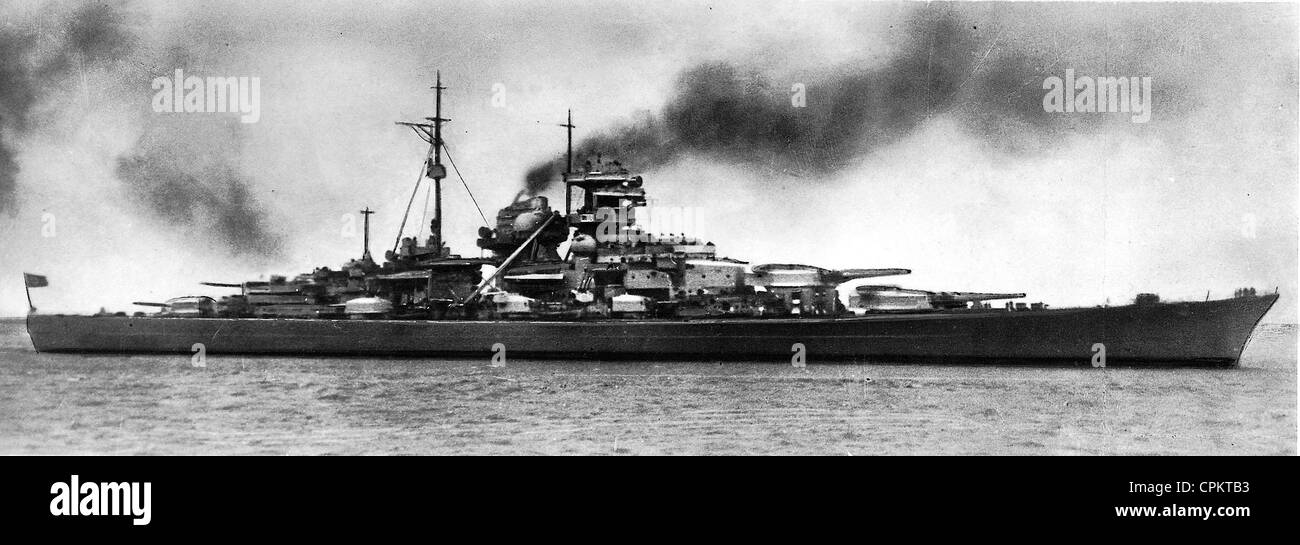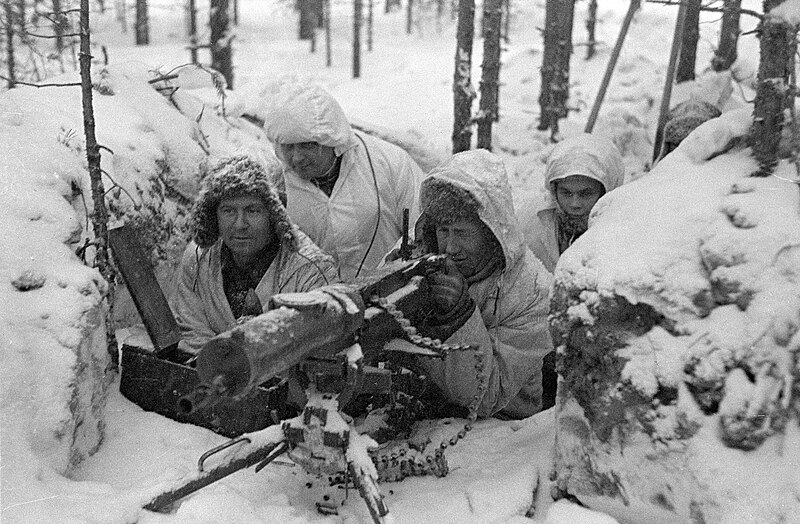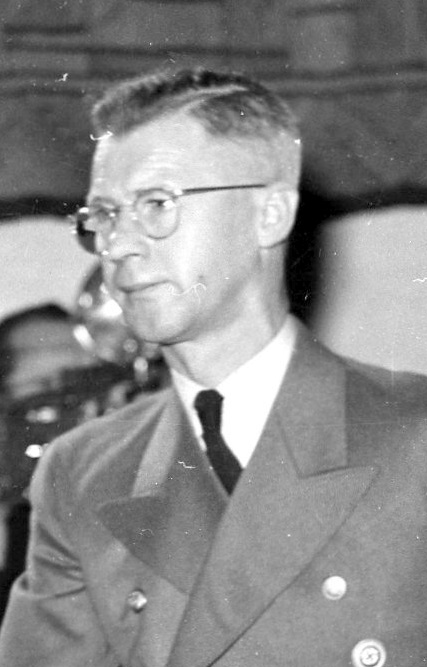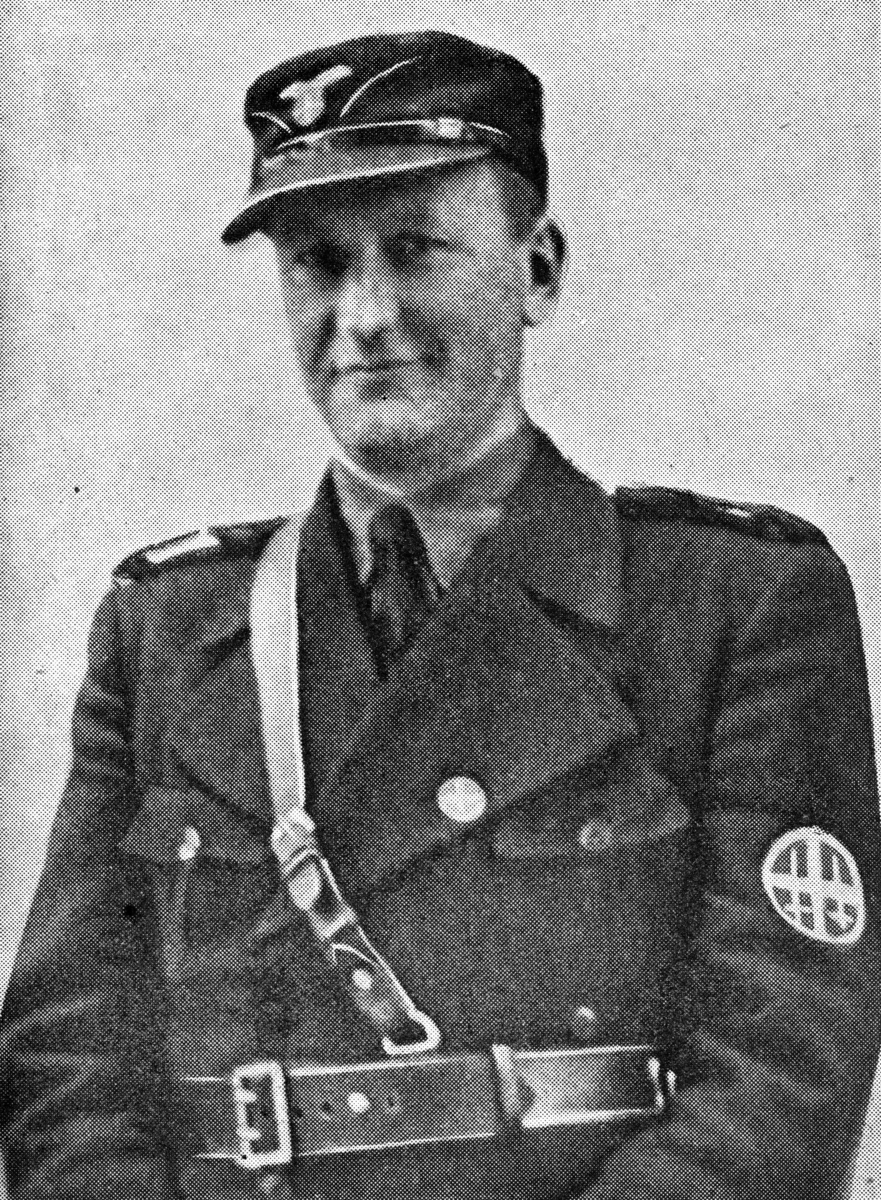Survivors: The Story of Finland and Norway During the German-Japanese War
A Finnish machine gun crew waits for the Japanese invasion that never came, circa December 1946.
After the collapse of Reichskommissariats Moskowien (most of European Russia up to the Ural Mountains) and northern Ostland (the Baltic States and the Byelorussian SSR), Finland knew that they’d likely be next on the chopping block of invasions by the Imperial Japanese Central European Area Army so they decided to send out a secret delegation led by Carl Gustaf Emil Mannerheim to surrender to the Japanese.
General Araki Sadao, leader of the Japanese delegation during the meeting with Mannerheim – Araki would also be co-leader of the later Finnish-Japanese joint invasion of Norway, circa 1946 (top). Finnish Field Marshal and 6th President of the Republic of Finland, Carl Gustaf Emil Mannerheim, smokes a cigar during the meeting with the Japanese (circa 1946, bottom).
The Finnish delegation met with the Japanese delegation, led by General Araki Sadao (a veteran of the Russo-Japanese War, the Siberian Intervention during the Russian Civil War, the China War, & the Pacific War), in the city of Leningrad (later renamed back to Petrograd) and offered lucrative mineral extraction rights in Finnish Karelia and the Petsamo region for Japanese Zaibatsu and to help the Japanese in their war against Germany. In exchange, Tokyo would recognise
all territory that Helsinki gained/regained in the German-Soviet War. The Japanese, under Sadao, agreed with Mannerheim and welcomed the Finns as allies against the Germans (even though they were enemies prior to this). The Japanese had accepted Mannerheim’s offers mainly due to the fact that they didn’t wanted to get potentially bogged down in Finland and have their own Winter War. Also part of the deal between Finland and Japan was that members of Finnish SS wouldn’t be tried for war crimes as long as they joined the Japanese war effort against the Third Reich, many of who did just that. It wasn’t long before the small amount of Wehrmacht troops in Finland had been quickly rounded up and disarmed by Finnish troops right as the Japanese entered Finland.
Japanese soldiers enter a Finnish border town not as invaders/occupiers but as friends, circa December 1946 (top). Imperial Japanese Army winter uniform circa 1946; used in Russia, Finland, Sweden, and Norway (bottom).
===============================
Wehrmacht troops marching in Oslo, Norway to commemorate their victory over the USSR circa 1945.
Since the invasion of April 1940, as part of Operation Weserübung or the German invasions of Denmark and Norway, German forces had occupied the neutral Scandinavian country of Norway for six years & nine months. Conventional armed resistance to the German invasion ended on 10 June 1940 and the Germans controlled Norway until their defeat by Finnish-Japanese forces in late January 1947.
Throughout this period, Norway was continuously occupied by the Wehrmacht. Civil rule was effectively assumed by the Reichskommissariat Norwegen (Reich Commissariat of Norway), which acted in collaboration with a pro-German puppet government of Vidkun Quisling while the Norwegian King Haakon VII and the prewar government escaped to London, where they acted as a government in exile.
After the Finns switched sides around Christmas 1946 and joined the Empire of Japan in its war against Nazi Germany, a joint Finnish-Japanese ultimatum was delivered to the Swedish embassy in the Finnish capital of Helsinki that was passed on to the government in Stockholm it read as such:
“The military forces of the Empire of Japan and the Republic of Finland request that they be able to move through Swedish territory in order to liberate the Norwegian nation and People from German occupation. If the Swedish government doesn’t give an answer favourable to the governments of Finland and Japan within 24 hours then both countries shall invade and occupy the nation.”
Finnish soldiers marching through a forest in Sweden on their way to Norway in late December 1946 (top). Japanese troops march through a Swedish mountain pass on their way to Norway, circa December 1946 (bottom).
To the surprise of no one, the Swedes acquiesced and granted permission to the Finns and Japanese to move through their country as they knew the Japanese would crush them just as they had done to the Chinese, Americans, European colonials, and were currently doing to the Germans. As Finnish and Japanese troops (under the command of Araki and Mannerheim) marched westward across Sweden, the German occupation force in Norway was in panic as their air assists were gone since the German High Command — under orders from Hitler — pulled out entirely of Norway to better defend Eastern Europe from the Japanese juggernaut.
To make matters worse, their Norwegian puppet Vidkun Abraham Lauritz Jonssøn Quisling had a few tricks up his sleeve; unbeknownst to the Germans while the Finns and Japanese sent their ultimatum to Stockholm, he sent a secret coded telegraph to the Japanese embassy in Oslo wherein he announced his intention to betray the Germans and join the Japanese and Finns in kicking out the Wehrmacht. Quisling had grown tired of being a mere puppet of the Germans and wanted to actually be the Norwegian Führer like Hitler had promised him years ago only to betray him just like Quisling had betrayed his own countrymen.
Reichskomissar for Reichskommissariat Norwegen, Antonius Terboven circa 1945.
The Japanese responded amicably to Quisling’s telegraph message and replied that if he was able to get an uprising of Norwegian soldiers and Norwegian SS members, who had been recalled back to Norway by German occupation leader Reichskomissar Josef Antonius Heinrich Terboven, Quisling agreed and told the Japanese he would do what he could. Throughout the early days of January 1947, Quisling secretly sent information to the Norwegian resistance about German troop positions, supply depots, etc. and gave secret orders to the Norwegian SS and Army to turn on the Germans when the signal was given....that signal was the Finnish-Japanese invasion of Norway which commenced on January 10, 1947 at 3:02 AM CEST (Central European Standard Time).
Finnish troops look at the remains of a German Panzer III as they march towards Oslo (top).
Norwegian resistance fighters in Oslo pose for a photograph immediately after the “Battle of Oslo” (bottom).
The Oslo Uprising, as it was called, caught German forces there completely off guard as Norwegian SS members and collaborationist soldiers in the capital suddenly turned on their German comrades and attacked them along with various cells of the Norwegian resistance rising up. The Norwegian resistance also launched a nationwide insurrection against their German occupiers. Meanwhile, Japanese Nakajima Kikka jet fighters screeched over the Swedish-Norwegian border from airbases in Finland and Japanese bombers harried the German forces in Norway.
The so-called “Battle of Oslo” was a bloody affair with vicious street and house to house fighting as the Norwegians and Germans battled for the city, but as more and more Norwegian territory quickly fell to the Finnish & Japanese invaders Reichskomissar Terboven realised his position was unsustainable and so he surrendered to Norwegian forces only five days into the battle and ordered all German forces across Norway, via radio, to lay down their arms and surrender to Norwegian-Finnish-Japanese forces. He would later be tried at the “Tribunal for the Holocaust and Other Nazi War Crimes” in Tokyo on March 23, 1949 and sentence to death by hanging.
Vidkun Quisling prepares himself for his speech to the Norwegian people after the Finnish-Japanese liberation of Norway.
The next day, Vidkun Quisling revealed via radio that he had orchestrated the Oslo Uprising and had helped in freeing Norway from German occupation and proclaimed the pro-Japanese Nasjonalstaten Norge (National State of Norway) with himself as Fører or Leader of the country. His political party, the far right-wing Nasjonal Samling/NS (meaning “National Rally”) continued on as the
only legal party in Norway from when it was first put into power by the Germans in 1942.
Though the Norwegian people cheered on their Finnish and Japanese liberators, they wanted Quisling out and the monarchy back – so Norwegian resistance fighters started a second Oslo Uprising to depose Quisling. However, the Norwegian SS and Army suppressed the uprising with massive aid from the Japanese and Finns (the Norwegian Army only joining in crushing the uprising for fear of Japanese retaliation against them if they sided with the rebels).
Oliver Møystad, chief of the Norwegian secret police from 1947 until his death in 1956 (top). Quisling and Møystad inspect members of the Nasjonal Sikkerhetsgruppe secret police, who wear the Hirden uniforms, in 1950 (centre).
After the German-Japanese War ended, the Quisling Government signed multiple trade agreements and basing rights to the Japanese government, zaibatsu, and navy. Also in an effort to ensure that nobody could challenge him, the Fører sent out assassins to kill off many members of the London-backed Norwegian Government in Exile but avoided killing King Haakon himself. Quisling also merged the NS paramilitary group, Hirden, with the former collaborationist security police, the Statspolitiet, into a secret police called the “Nasjonal Sikkerhetsgruppe/NSG” or “National Security Group” which was headed by Oliver Møystad to hunt down dissenters and imprison or kill them – it would become the one of most ruthless secret police organisations in Europe.
The NSG would also be instrumental in rounding up the remaining Jews in Norway and deporting to the newly established nation of the State of Israel. Quisling would continue as Fører of the National State of Norway until his death in 1974, wherein he’d be succeeded by NS General Secretary Christian Astrup.
Quisling walking and talking with Astrup in 1953 about expanding Norway’s hydroelectric dam system.



